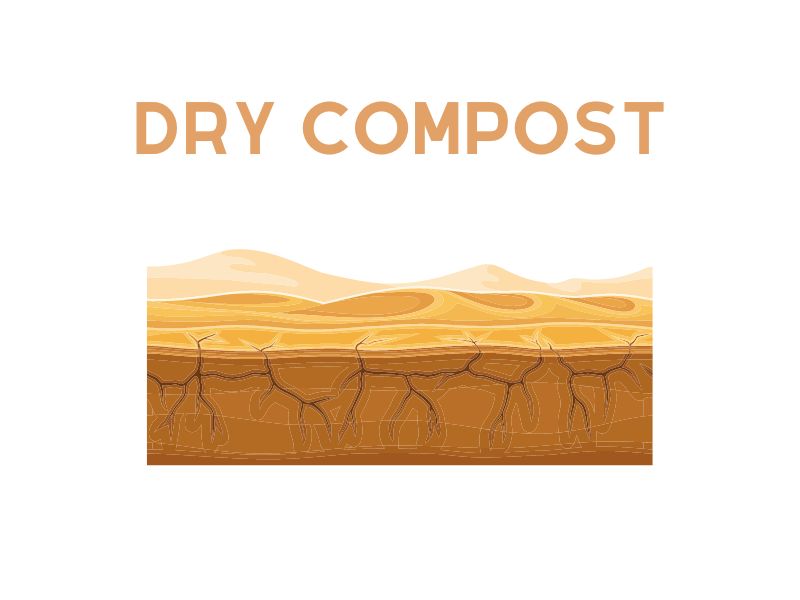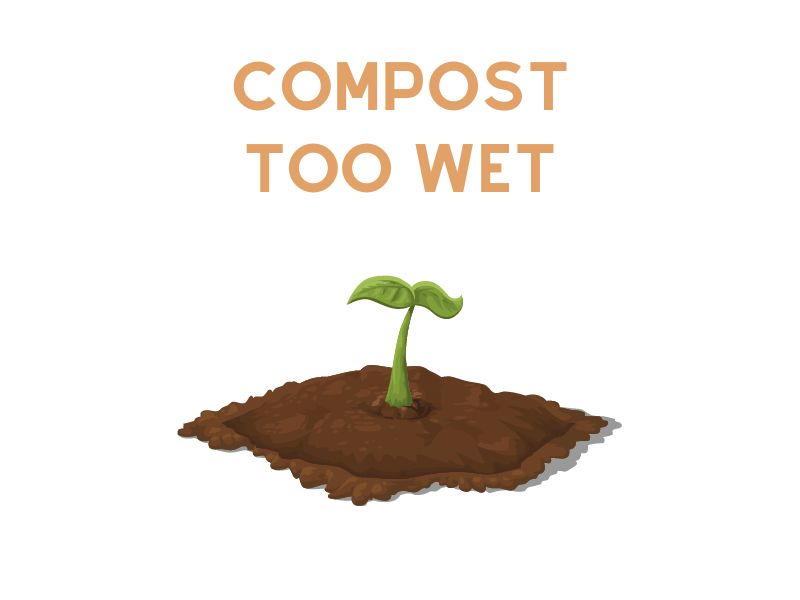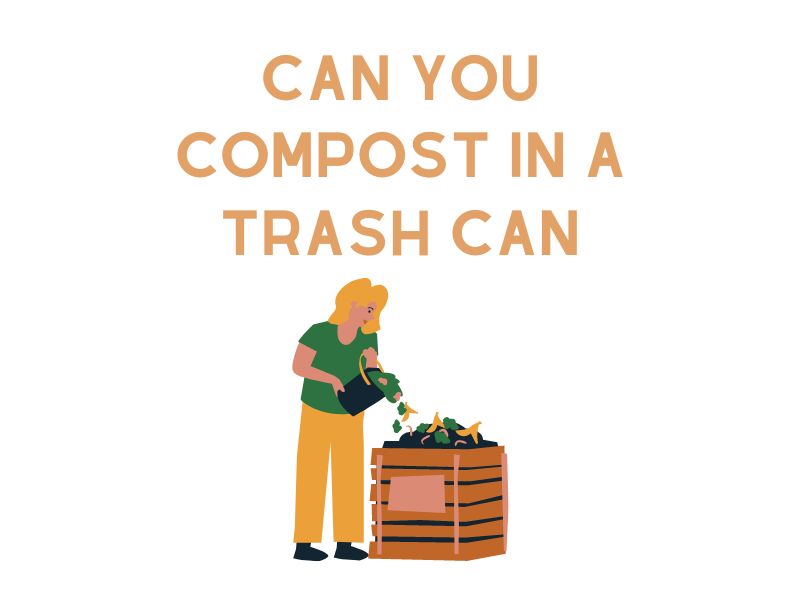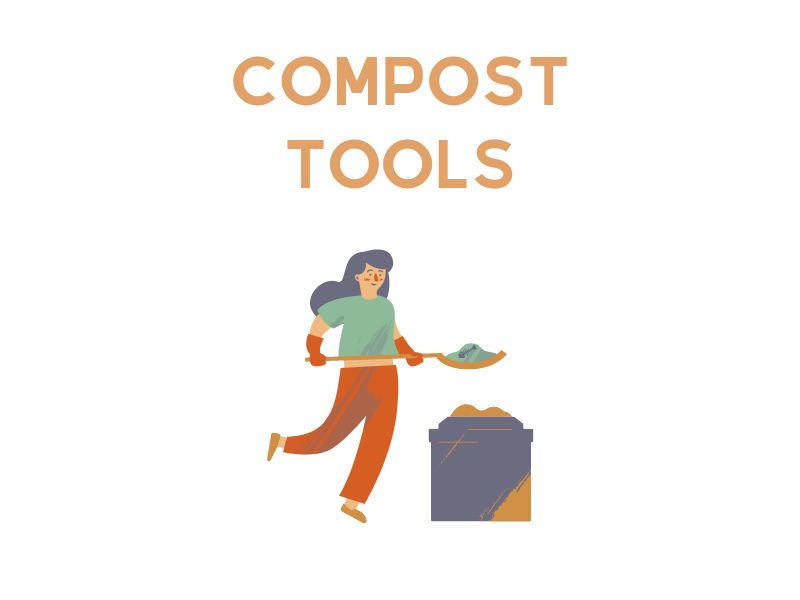Composting is more than just a sustainable practice; it’s a testament to nature’s remarkable ability to recycle and renew. Through the composting process, kitchen scraps, yard waste, and other organic materials are transformed into nutrient-rich soil amendments, beneficial for gardens and the environment. However, achieving the right conditions for effective composting can sometimes be challenging. One common hurdle gardeners and compost enthusiasts face is dry compost. In the intricate dance of decomposition, where microorganisms play a starring role, moisture is a critical component. When compost lacks the necessary moisture, the entire decomposition process can stall, leading to several issues. This article offers insights into the challenges of dry compost, detection methods, and actionable solutions to restore its vitality.
Dry Compost – Why it’s a Problem
The ideal composting environment is a harmonious balance of organic materials, air, and moisture. Each component is crucial, but moisture serves as the lifeblood for the myriad of microorganisms that fuel the decomposition process. When compost becomes too dry, several detrimental effects arise:
- Stunted Microbial Activity: Microorganisms, including bacteria and fungi, need moisture to facilitate their metabolic activities. In dry conditions, these microbes go dormant or even die off, significantly slowing the decomposition process.
- Nutrient Degradation: Compost is prized for its rich nutrient content, which is the result of organic matter breaking down. In arid conditions, many of these nutrients become less available or can even evaporate, diminishing the value of the compost to plants.
- Pest Magnet: While a well-maintained compost pile can deter pests, dry compost can inadvertently invite them. Certain insects, notably ants, are drawn to dry conditions, and their presence can further disrupt the composting process.
- Loss of Soil Structure Benefits: One of the lesser-known advantages of compost is its ability to improve soil structure, aiding in water retention and root growth. Dry compost lacks this property and, when added to the garden, might not deliver the expected benefits in terms of soil aeration and moisture retention.
Understanding the profound implications of dry compost underscores the importance of maintaining the right moisture levels for an effective and enriching composting experience.
How to Tell if Compost is Too Dry
While seasoned composters may develop an instinct for sensing the health of their compost piles, beginners might need more guidance to determine if their compost is adequately moisturized. Recognizing the symptoms of dry compost is the first step toward corrective action. Here are the detailed ways to detect if your compost is suffering from a moisture deficit:
- Visual Examination: Healthy compost often has a dark, rich hue reminiscent of fertile forest soil. In contrast, excessively dry compost will exhibit a pale or even grayish tone. It might appear more like dust or fine sand than the crumbly, earthy material one would expect.
- Tactile Assessment: The touch test is a straightforward and reliable method. Don a pair of gloves, reach into your compost pile, and grab a handful. Well-moistened compost should feel damp, like a wrung-out sponge, and might clump together slightly when squeezed. If the compost feels crumbly, dusty, or falls apart easily without any moisture residue on your gloves, it’s a clear sign of dryness.
- Olfactory Clues: A healthy compost pile emits an earthy, fresh aroma, akin to the smell after a light rain in a forest. Dry compost, on the other hand, might be devoid of this pleasant scent. In some cases, an overly dry pile can produce an off or slightly sour smell due to the inability of microbes to break down materials efficiently.
- Performance Indicators: If you’ve been composting for a while and notice that the decomposition rate has significantly slowed or stalled, this could be an indirect sign of inadequate moisture. Microbes require water to facilitate the breakdown of organic materials, and a decrease in their activity often points to a moisture issue.
Armed with these diagnostic tools, even novice composters can quickly gauge the health of their compost piles and take the necessary steps to address any dryness issues.
Why is my Compost Dry? (And what to do)
Every compost pile is a dynamic ecosystem, influenced by various external and internal factors. If you find your compost parched and lifeless, understanding the potential causes can guide your remedial steps. Here’s a deeper look into the reasons behind a desiccated compost pile and how to breathe life back into it:
- Exposure to Elements:
- Cause: If your compost bin or pile is placed in a spot receiving intense sunlight or strong winds, it’s likely to dry out rapidly. Direct sunlight can bake the pile, while winds can wick away essential moisture.
- Solution: Relocate your composting setup to a shaded or wind-protected area. If moving isn’t feasible, consider providing a shade, like a cloth or a tarp, to shield it from direct sunlight. Ensure the covering is breathable to avoid suffocating the pile.
- Inconsistent Watering Routine:
- Cause: A lapse in regular watering or inconsistent moisture checks can lead to prolonged dry periods, depriving the compost of its required dampness.
- Solution: Incorporate a routine check, perhaps aligned with other gardening tasks, to ensure your compost maintains its moisture. A reminder or setting a specific day for compost checks can be handy.
- Predominance of High Carbon Materials:
- Cause: Carbon-rich materials, often termed “browns,” such as straw, leaves, or paper, are naturally absorbent. An excessive amount can sap the pile of its moisture, leading to imbalances.
- Solution: Always aim for a balanced carbon-to-nitrogen ratio in your compost. If you’ve added a lot of browns, counteract this by introducing more “greens” or nitrogen-rich materials, such as vegetable scraps, fresh grass clippings, or even coffee grounds. This not only adds moisture but also ensures efficient decomposition.
- Poor Compost Structure:
- Cause: Compact compost can hinder the even distribution of moisture. On the flip side, a very loose pile can fail to retain water effectively.
- Solution: Regularly turn and aerate your compost. This not only helps in even moisture distribution but also introduces air, boosting microbial activity. Using a compost turner or a simple garden fork can do the trick.
Understanding the unique characteristics and needs of your composting system is essential. With a keen eye on these potential dryness triggers, you can proactively address issues and maintain a thriving compost ecosystem.
Ways to Provide Compost with Water
Ensuring your compost retains the right amount of moisture is akin to nurturing a garden; it’s about providing just the right amount without overdoing it. Here’s an in-depth look into diverse methods to deliver water to your compost, ensuring it remains a thriving haven for microbial life:
- Using a Watering Can:
- Advantages: Allows precise control over the amount of water you add. This is especially beneficial for smaller compost bins where the risk of over-watering is real.
- Technique: Fill your watering can and sprinkle water evenly across the top layer of the compost. Afterward, mix or turn the compost to distribute the moisture uniformly.
- Hose with Sprayer Attachment:
- Advantages: Ideal for larger compost piles or bins. The sprayer ensures even distribution without causing compaction.
- Technique: Attach a sprayer to your garden hose and set it to a gentle mist or shower setting. Spray the compost evenly. As with the watering can method, mix the compost afterward for even moisture distribution.
- Capturing Rainwater:
- Advantages: Natural and sustainable. Rainwater lacks the chemicals often found in tap water, making it excellent for microbial health.
- Technique: Position open compost bins or piles in areas where they can catch rain. If using a compost tumbler or closed bin, consider collecting rainwater in barrels or buckets and using it to water the compost. For those in particularly dry areas, using a permeable cover over the compost can help retain captured rainwater without depriving the pile of much-needed oxygen.
- Add Moist Greens:
- Advantages: Introduces organic moisture and enhances microbial activity.
- Technique: If you have fresh vegetable scraps, fruit peels, or recently mowed grass, mix them into the dry compost. These “greens” release water as they decompose, providing natural moisture to the pile.
- Soaked Cardboard or Newspaper:
- Advantages: Absorbent materials can retain a good amount of water and release it slowly into the compost.
- Technique: Soak strips of cardboard or newspaper in water until they’re saturated. Then, layer or mix them into your compost. They’ll act as slow-release moisture sources.
Remember, while it’s crucial to ensure your compost is moist, overhydration can be equally problematic, leading to anaerobic conditions and unpleasant odors. Always aim for the consistency of a wrung-out sponge when assessing your compost’s moisture levels.
Troubleshooting Dry Compost Problems
Dry compost can be a persistent issue, and sometimes, even after initial remedies, you might encounter challenges. These might stem from underlying problems or external factors not immediately apparent. Let’s delve into a comprehensive approach to troubleshoot and address lingering dry compost problems:
- Regularly Turning the Pile:
- Why It Helps: Turning the compost promotes aeration, allowing moisture to spread more uniformly throughout the pile. It also brings the drier, outer materials into the moister center, balancing the overall moisture level.
- Technique: Use a compost turner, garden fork, or shovel to mix the compost. For larger piles, turning once a week can be beneficial. For smaller bins, every other week should suffice.
- Introduction of Fresh Green Materials:
- Why It Helps: Green materials like vegetable scraps or fresh lawn clippings are moisture-rich. They release water as they break down, providing organic moisture to the compost.
- Technique: Intermix the greens with the existing compost, ensuring they’re well distributed. This can introduce immediate moisture and also sustain moisture levels over time.
- Limiting Excessive Dry Additives:
- Why It Helps: While carbon-rich “browns” like leaves, straw, or paper are essential for compost balance, an overabundance can absorb and retain too much moisture.
- Technique: If your pile is predominantly dry brown, hold off on adding more. Focus on balancing with greens and ensure you’re turning the compost regularly to optimize moisture distribution.
- Check for External Factors:
- Why It Helps: Sometimes, the location or environment might be a consistent source of dryness, such as areas with high evaporation rates or proximity to heat sources.
- Technique: Assess the compost’s location. Ensure it’s not near HVAC exhausts, intense reflective surfaces, or in prolonged direct sunlight. Relocation might be the solution in these cases.
- Adjusting Particle Size:
- Why It Helps: Very large chunks of material can create air pockets, which might lead to uneven moisture distribution. Conversely, too-fine particles can compact easily, repelling water.
- Technique: Aim for balanced particle size in your compost. Shred or chop larger materials before adding them, but ensure there’s enough bulk to promote airflow.
- Monitor & Adjust:
- Why It Helps: Regular observation helps catch issues early and allows you to tweak your approach based on real-time conditions.
- Technique: Dedicate time weekly or bi-weekly to inspect your compost. Feel for moisture levels, observe decomposition progress, and adjust your maintenance routines accordingly.
By systematically addressing these potential challenges, you can restore and maintain the health and moisture of your compost, ensuring it’s primed to deliver nutrient-rich benefits to your garden.
Conclusion
Navigating the journey of composting brings forth an appreciation for nature’s intricate cycles of decay and regeneration. At the heart of this process, ensuring balanced moisture plays a pivotal role. Dry compost isn’t just a fleeting issue; it’s a signal that the life-sustaining process of decomposition is being hampered, potentially impacting the richness and vitality of the end product.
Understanding the causes of dry compost, recognizing its symptoms early on, and adopting holistic remedial measures are essential for both novice and seasoned composters. It’s about more than just adding water; it’s about nurturing an ecosystem where microorganisms thrive, breaking down organic matter into black gold for our gardens.
In a broader perspective, composting, and the attention we give to its moisture balance underscores our role as stewards of the environment. By ensuring our compost piles and bins are optimally hydrated, we contribute to a sustainable cycle of life, turning waste into a resource, and nurturing the soil that, in turn, nurtures us.
As you continue or embark on your composting journey, remember that each compost pile or bin is unique. Be responsive to its needs, and in return, it will generously reward your garden and the environment.




